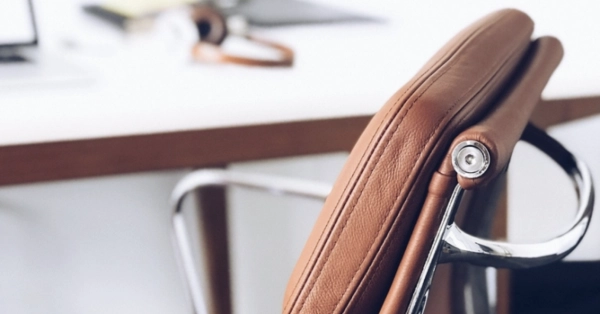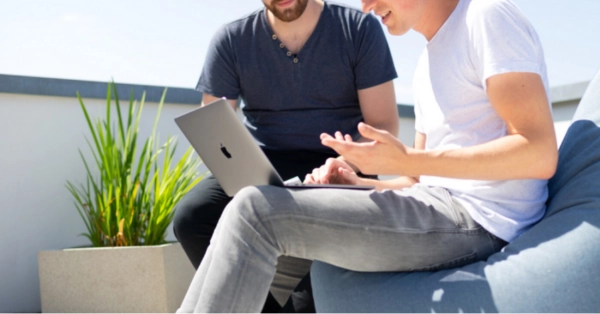Besides having a good Business Model Plan for your business, it’s just as important to know who you are and what your career purpose is. Business Model You comes as a personal development tool and it helps entrepreneurs find out their multiple roles they play in their everyday lives.

In this article you will find out:
- What is Business Model You (BMYou) and how it was built
- The structure of BMYou
- How would BMYou help you gather precious information about your skills, abilitites and the way you work
- How is BMYou helping you in the relationship with your clients, what are your expectations and what are theirs
- Guidelines on how to fill in the information in BMYou + downloadable template
What is the Business Model You Canvas
Tim Clark, Alexander Osterwalder and Yves Pigneur worked together and developed Business Model Generation book, where they introduced the the very-well known methodology - Business Model Canvas. Business Model You is a tool that was developed based on the Business Model Canvas as “a one-page method for reinventing your career”, as the book itself states. BMYou it’s an adaptation of the Business Model Canvas and was built on the needs of entrepreneurs who wanted to change the way they worked, but mostly, for those who want to know what is fundamental to their careers. It is essentially a Personal Business Model.
Why is BMYou important?
So BMYou applies to the personal living and working environment of an individual and its goal is to give shape to your career, and it might be used to reveal new ways to get more of what you can do, based on your skills and the market you are working in or just adapt to the changing market. For entrepreneurs, BMYou along with Business Model canvas might develop an extensive vision of your life, both on a personal and professional level.
Structure and how to fill in the information in Business Model You
BMYou is structured into 9 elements:
1. Who helps you – valuable partners
The people that help and guide you in making good career choices are the first (and extremely important) building block in the BMYou, as it is recommended to ask for advice while making choices for the future – mostly, when it’s about the career.
This section should include those people who you are close to, like your family, friends, maybe mentors, superiors, consultants, partners, etc.
2. What you do – core activities
The next section you should focus on in filling out the BMYou consists of writing down what you exactly do day by day. These are the aspects of your job that define your role or position now and what is your focus: design ideas, plan, teach, manage, sell, or implement certain ideas or projects?
You might realize that your current job doesn’t define you or shine on your biggest talents and maybe some other roles might offer you more fulfillment in terms of personal and professional development.
3. How you help – value proposition
Identifying the value proposition is important to both the BMYou and the BMC (Business Model Canvas). It’s important to know the added value you and your work bring to your clients (whoever they might be).
You should state the specific value you add – do you resolve certain needs or problems for your clients? What are those specific benefits your clients gain through your work – for example: decreasing risks, cost efficiency, satisfying emotional/social needs, increased performance, and user satisfaction, etc.
4. How you interact – customer relations
The relationship between employers and customers is crucial, as it’s the main reason problems or complaints rise most of the time. It is therefore important to tone down any sort of inconsistencies that might occur.
So write down what types of relationships your clients expect you to develop with them and think about what type of relationship you have with them now. Some examples to guide you: co-creation, assistance, maintenance, mentor-mentee, etc.
5. Who you help – customer segments
Try to think about who you are creating value for directly and who are those that benefit from your work. Who you help through your work might help you target the right types of customers, organizations or companies, along with customer targets that might benefit from your skills and strengths in the future.
The most important clients for you might be those you work for, but at the same time, they might also be your employees, colleagues, partners, or stakeholders.
Who you are and what resources do you have
This section comes very close to writing down your identity in terms of career goals. Here you should clearly state your top skills, talents, unique traits that define you as a person, the type of work you enjoy doing and the type of work your colleagues/clients make you feel like you’re making a real difference. Do you enjoy working with ideas, people, or physical objects?
You should also consider what are the resources that made you achieve your goals so far and what are those that might help you thrive forward? For example: your personal network, reputation, experience, unusual habits, and abilities, etc.
What they think of you and what you deliver – channels
In this section we talk about everything concerning communication, visibility, reputation, and network. Mostly when you are looking for a career change, it’s quite difficult to succeed on your own. How do you make sure your employer or clients are satisfied with your work?
Think about how does your work and added value reach your clients or potential customers and the channels you use to communicate with them: what are those channels you use to work with them? Which of these work the best and bring the best results?
What you have – sources of income
Income is one of those factors people start to wonder whether to make a change in their career or not, whether to change something in the way they do things now and how to adapt to their current needs.
Clearly evaluate what are your clients paying you for today and whether you’re satisfied with it, how are they paying you, how would they prefer to do it and how would you prefer the process to be. All these are those “hard” wins you gain while doing your work (more than salary, it might also include commissions, shares, other material benefits, etc.). Don’t forget to mention those “soft” wins you get from it also, for example, professional development, connections, personal satisfaction, recognition, etc.
What you give – cost structure
The final building block consists of the non-monetary expenses – what are your “hard” and “soft” costs and what are you willing to “trade-off” for doing your work.
Write down all the costs involved in executing your work – such as, time, energy, health, commute, etc., and what are those you are sacrificing while at it: hobbies, family time, personal projects, etc. Decide whether you are satisfied with how things are balanced and if there are aspects you would like to align differently in your current work or with your next employer/client.
So finally, the Business Model You helps you describe your personal path in an effective and practical way so that you will adjust your vision and plans for the new paths you’re seeking in your career development. Whether it be just rearranging how you do things day by day in your work and in your professional relationships, or you look for new challenges and opportunities, BMYou will help you gain new perspectives.
Now that you know and read about what is BMYou and how to conduct it, you’re ready to start completing your own analysis with the template below! You can use this downloadable or you can use the dedicated tool!
Template
Business Model You























